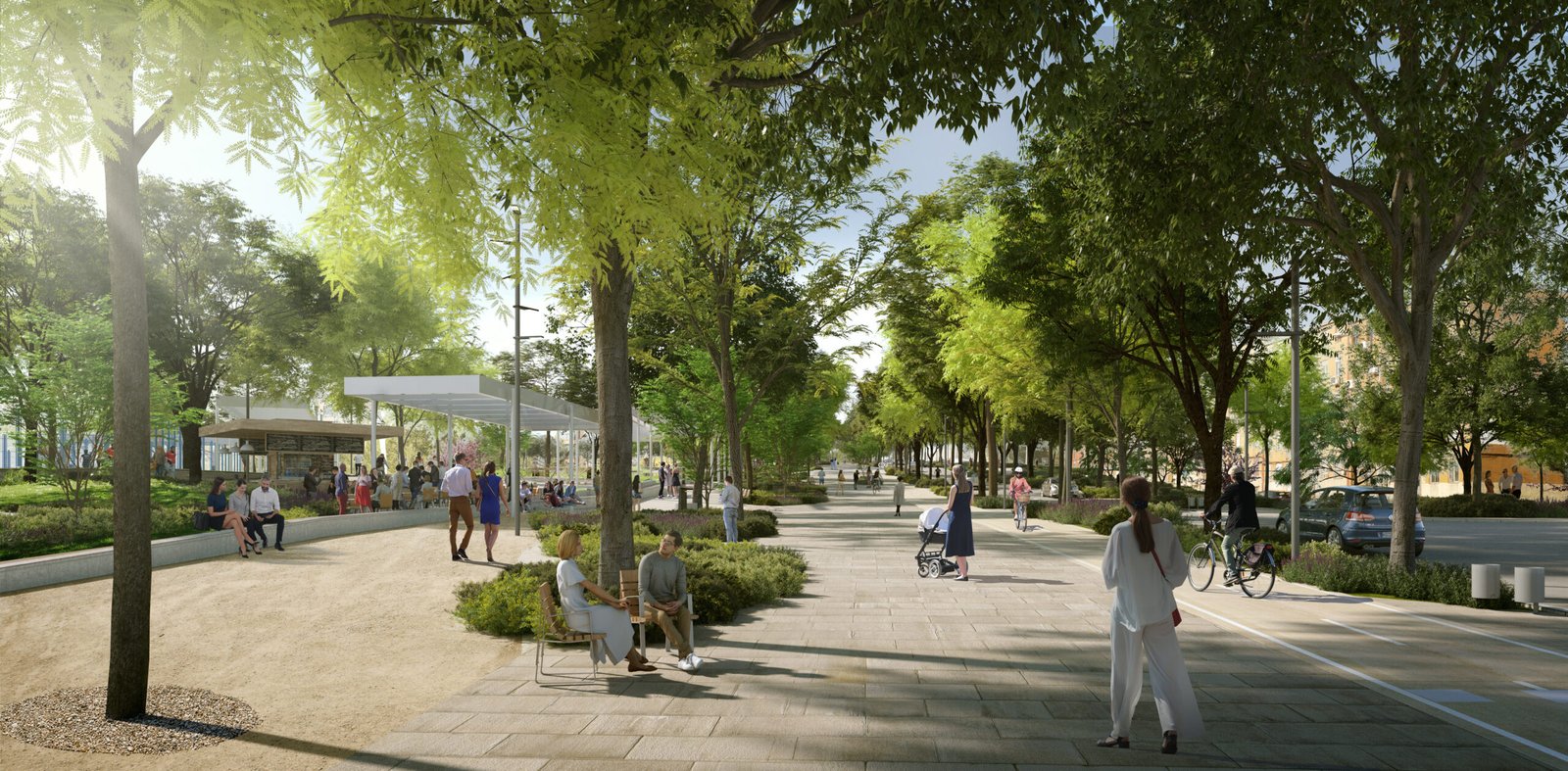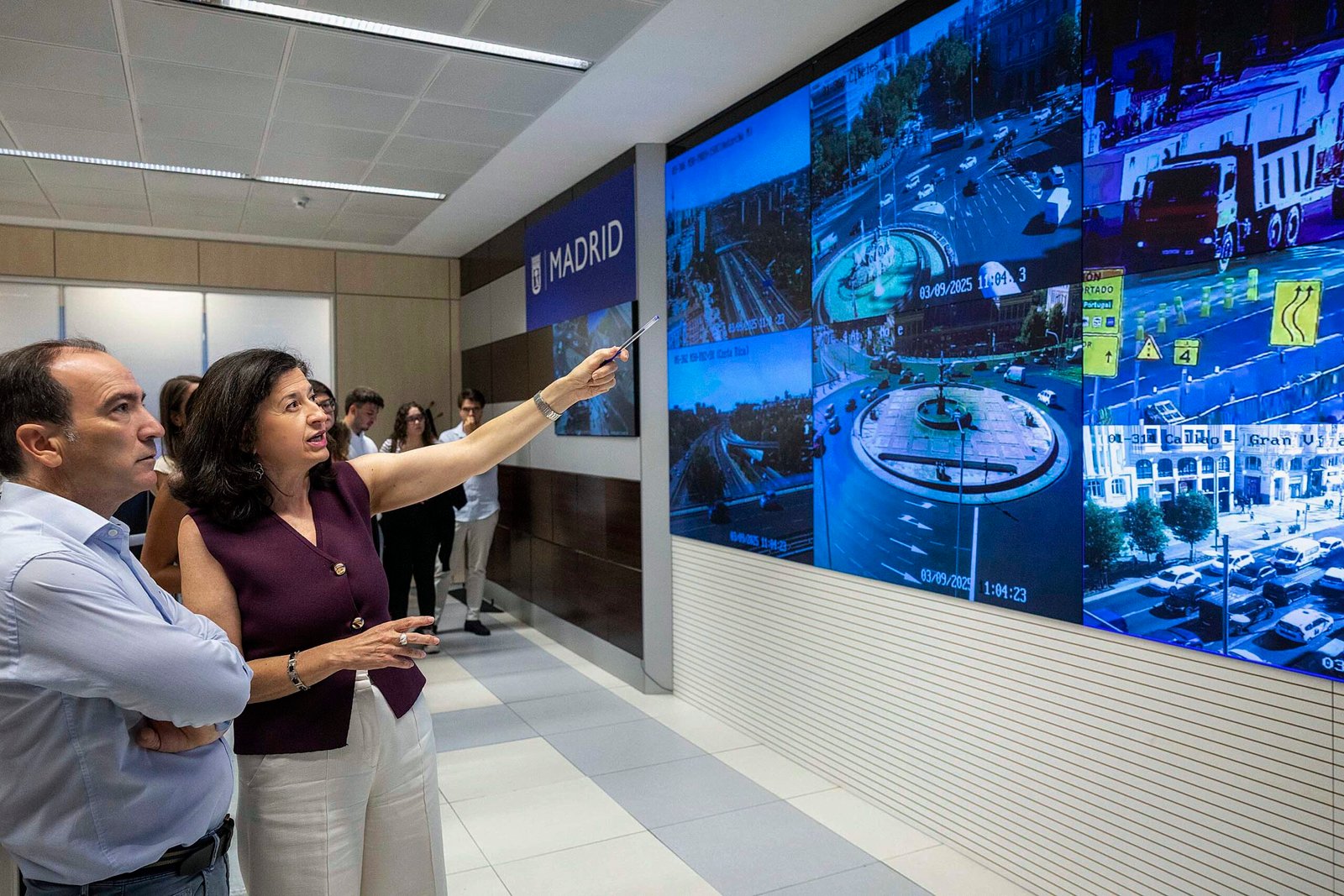The future Southwest Green Walk and the A-5 underground work will not only transform the city of Madrid from an urban point of view. The works currently underway in the southern part of the capital incorporate significant technical innovations that will make this project a benchmark at an international level. This underground project, promoted by the Urbanism, Environment, and Mobility Area led by Borja Carabante, will be the first of its kind in Spain, with geothermal technology in its structure in urban soil.
This was explained this Friday by the Mobility coordinator of the City Council, María José Aparicio, and the General Director of Planning and Mobility Infrastructures, Lola Ortiz, who detailed the specifics of this project in a specific session held at the El Greco Cultural Center, next to the Extremadura promenade, to understand how this work will generate clean energy through the tunnel’s thermoactivation.
In its design, the project incorporated several renewable energy generation systems, aiming to achieve sustainability for the infrastructure and optimize its resources to make its energy balance zero during the operation phase. In this regard, the project includes the installation of geothermal and photovoltaic energy infrastructures to supply adjacent facilities, allowing to offset all the consumption of the underground tunnel on the Southwest Green Walk.
Geothermal system operation
Firstly, the project proposes the use of geothermal energy. This will be possible because the tunnel’s foundation will be executed using deep screen solutions, which will be activated by installing geothermal probes anchored to its framework to harness this type of energy provided by the ground and generate climate control power in its environment.
Geothermal energy is based on the earth’s ability to store heat from the sun, maintaining a nearly constant temperature throughout the year at a certain depth. In the case of the A-5, the system will take advantage of the constant temperature of the subsoil at 16ºC at a depth of 16 meters. The proposed plan includes the thermoactive activation of two double slab sections, each 250 meters long (1,000 meters in total), aiming to maintain a ring of water tempered at 25ºC using two geothermal heat pumps of 110 kW each located in an external geothermal module.
Heat pump systems use the ground’s thermal inertia to generate cold or heat. It is a much more efficient air conditioning system than others on the market, with added advantages: a 25% reduction in noise, better architectural integration as it does not require elements on the façade or roof, elimination of health risks, a 50-year lifespan, reduced CO2 emissions, and low maintenance costs.
This available geothermal energy was projected to heat public buildings near the tunnel area. In the project’s drafting, several public facilities were preselected to take advantage of this available thermal power. This generated energy would provide heating to the buildings, reducing energy consumption by 80% to 90%, enhancing the environmental sustainability of the project, and reducing the operational costs of these facilities.
Slab thermoactivation
Finally, the slab thermoactivation will supply heating, cooling, and hot water to the Ángel González Municipal Public Library. The project’s design and development consider the possibility of future expansions with new connections. The library currently has a thermal installation consisting of a 285 kW boiler and a 220 kW chiller. In their place, two 150 kW heat pumps will be installed in the building to complete the process. This will ensure the current temperatures of the new Ángel González Municipal Public Library installation, reducing energy consumption and promoting the project’s environmental sustainability.
Photovoltaic energy with pergola collection
Moreover, the project incorporates the implementation of a photovoltaic installation for clean energy generation on the surface, available once the current roadway is undergrounded. The aim is to achieve an average annual energy generation that helps balance the tunnel’s consumption and provides integrated shaded spaces along the Green Walk.
Considering the urban environment in which the project is located and other constraints, the most feasible solution is to execute photovoltaic installations on pergolas. These structures are commonly used for this purpose in urban environments where space is limited.
The Southwest Green Walk includes the installation of four types of pergolas. Firstly, a modular design (with rectangular elements of 7×10 m or 7×13 m that are grouped according to available space). The other three types of pergolas are specially configured solutions for the Southwest Green Walk and will be located in significant areas such as the Padre Piquer, Batán, and El Greco nodes.
The photovoltaic pergolas will be distributed along the boulevard. The surface area dedicated to solar energy generation has been maximized to offset the tunnel’s energy consumption, integrating the pergolas in different leisure spaces along the new green and recreational areas. In total, eight sets of pergolas are planned to be distributed throughout the urbanization. The total surface area of the defined pergolas amounts to 5,643 m2.
The projected new tunnel will have an estimated energy consumption of 14,236 MWh/year. The available energy for heating from the geothermal exchange installation is 14,823 MWh/year. Additionally, the energy from the photovoltaic installation is calculated at 1,158 MWh/year. Therefore, both infrastructures together total 15,981 MWh/year, representing 112% of the energy consumed by the tunnel. /



